- News
- Reviews
- Bikes
- Accessories
- Accessories - misc
- Computer mounts
- Bags
- Bar ends
- Bike bags & cases
- Bottle cages
- Bottles
- Cameras
- Car racks
- Child seats
- Computers
- Glasses
- GPS units
- Helmets
- Lights - front
- Lights - rear
- Lights - sets
- Locks
- Mirrors
- Mudguards
- Racks
- Pumps & CO2 inflators
- Puncture kits
- Reflectives
- Smart watches
- Stands and racks
- Trailers
- Clothing
- Components
- Bar tape & grips
- Bottom brackets
- Brake & gear cables
- Brake & STI levers
- Brake pads & spares
- Brakes
- Cassettes & freewheels
- Chains
- Chainsets & chainrings
- Derailleurs - front
- Derailleurs - rear
- Forks
- Gear levers & shifters
- Groupsets
- Handlebars & extensions
- Headsets
- Hubs
- Inner tubes
- Pedals
- Quick releases & skewers
- Saddles
- Seatposts
- Stems
- Wheels
- Tyres
- Health, fitness and nutrition
- Tools and workshop
- Miscellaneous
- Cross country mountain bikes
- Tubeless valves
- Buyers Guides
- Features
- Forum
- Recommends
- Podcast
review
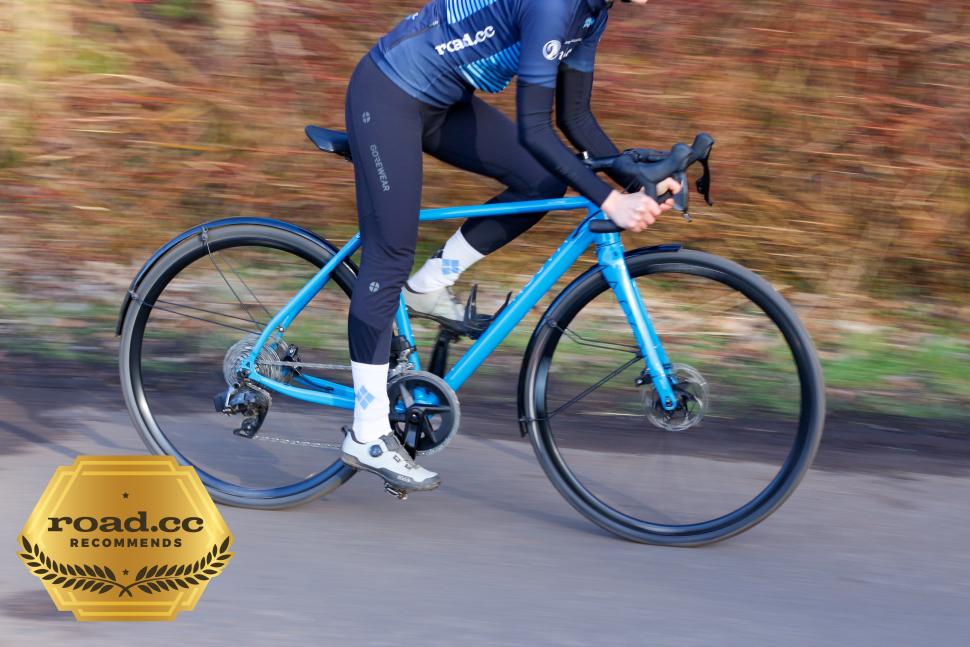 Mason Definition 3.0
Mason Definition 3.0£3,815.00
VERDICT:
Continues to define how good an aluminium road bike can be, especially for steady, long miles
Beautiful build quality and details
Great all-weather compatibility and performance
Good tyre clearance for year-round riding
Mounting points for rack and mudguards
Wide size range
A little sluggish on steep climbs
Weight:
8,800g
Contact:

This product has been selected to feature in road.cc recommends. That means it's not just scored well, but we think it stands out as special. Go to road.cc recommends
At road.cc every product is thoroughly tested for as long as it takes to get a proper insight into how well it works. Our reviewers are experienced cyclists that we trust to be objective. While we strive to ensure that opinions expressed are backed up by facts, reviews are by their nature an informed opinion, not a definitive verdict. We don't intentionally try to break anything (except locks) but we do try to look for weak points in any design. The overall score is not just an average of the other scores: it reflects both a product's function and value – with value determined by how a product compares with items of similar spec, quality, and price.
What the road.cc scores meanGood scores are more common than bad, because fortunately good products are more common than bad.
- Exceptional
- Excellent
- Very Good
- Good
- Quite good
- Average
- Not so good
- Poor
- Bad
- Appalling
Since its introduction, the Mason Definition has been a much-loved endurance road bike – we've even rewarded it with our Bike of the Year title. This third version has had a few updates to, as Mason puts it, "optimise and refine for the long-distance and all-season riding that it already excels at". Though some things have changed, the overall quality and performance of the bike remain unchanged and, to some extent, unrivalled. Putting this bike through some of the harshest winter riding months has been a true test of its four-season capability, and I must say it's passed with flying colours. It's not a punchy climber or sprinter (and nor am I!) but it does deliver some pleasantly buttery mile-munching.
If you're not swayed (yet), check out our guide to the best endurance bikes for more options for sportives, audax and long days in the saddle.
> Buy now: Mason Definition 3.0 for £3,815 from Mason
There are a few brands in the road cycling community that, when mentioned, receive a unanimously positive response. Mason seems to be one of these – every time someone asked me about my current review bikes and I mentioned the Mason Definition their response was along the lines of, "that must be a great bike". Undeniably – and deservedly – the British brand has built a reputation for making great quality bikes with well-thought-out details, materials and a great ride.
I will admit, though, that when I looked at the blue Definition that I'd put together out of the box, I could not help but think that, being an aluminium bike, it wasn't going to be that special. How wrong I was.
Mason Definition 3.0: Ride
I've been riding the Definition through the gruelling winter months – I didn't get to have many moments of sunshine aboard this bike at all. Having anticipated that, the Mason team equipped it with full mudguards for me. Granted, the flaps took away from the bike's aesthetic, but they certainly added some much-needed practicality to the setup. And practical is what this bike turned out to be.
I love riding long distances, and though I'm not quite getting on as many long rides in the winter months as I would like to, I put the Definition through many multi-hour outings and took it on everything from the smoothest tarmac to some questionable canal paths, and even an audax. It handled all of it with very composed calmness and was easy to get along with even on the longest days, thanks to its well-balanced geometry.
Dubbed as a four-season bike, it's quite evident that the Definition isn't meant to be an agile race bike and handle like a sensitive sports car. Instead, it is very calm and reassuring to ride, ideal for long distances where you'd rather not have the bike twitch on every little movement you might do. This calmness also aids its descending abilities, and it felt very planted when cruising down hills.
With that, the bike does lack on the climbing and quick acceleration front. On long, steady climbs this wasn't really holding me back but on the few occasions the road tilted up more than 15%, the Definition was a bit of a chore to lug up. The gearing of a 48/35T chainring paired with a 10-36T cassette isn't exactly hard, but with the weight of the bike, it simply takes a little more effort to power it up the steepest stuff.
I can't put that sluggishness down to the stiffness – the frame is well stiff enough around the bottom bracket and it moves efficiently. The less aggressive riding position could be something to do with it, but then if I had to choose between sprinting or overall stability, I'd take the latter any time.
The Definition 3 is certainly an endurance road bike, and though the likes of Josh Ibbett have raced it very fast and hard, that raciness comes from the way this bike carries on speed once you've got it moving. Of course, the 30mm tyres and full mudguards are not exactly aiding the snappiness, but what the Definiton was built to do, it does really well.
Though it doesn't have the snap of a carbon framed bike, the Definition frame still conveys a pleasantly compliant yet efficient feel throughout. Aluminium bikes can be unforgiving, but when done right as with the Definition, they can really feel somewhat akin to a steel or titanium bike. I'd argue that the feel is more to do with the quality of the tubing than the material itself, and it's indisputable that Mason has hit the nail on the head in that aspect.
Mason Definition 3.0: Geometry
The Definition actually shares the same geometry as Mason's steel steed, the Resolution, and is designed to offer a sporty feel while maintaining long-distance comfort.
It comes in a generously wide range of sizes, from 48cm up to 62cm. At 5ft 4in I'm kind of in between the two smallest sizes, but opted for the 50 for more front triangle space and stability that the longer wheelbase (999.1mm) offered.
The bike is built with longer miles in mind, evident in the pleasantly slack 71.5-degree head angle and 74.5-degree seat tube angle. These figures, for a smaller frame, are nowhere near as aggressive as some similarly sized bikes, and you get quite a long trail figure (the distance between the point where the steering axis of the front wheel intersects the ground and the point where the front tyre contacts the ground) of 66.3mm, which is what I'd attribute the neutral and not twitchy handling to.
The Definition does have quite a long seat tube compared with other bikes of similar size, and this meant I had minimal seatpost visible – and much higher standover height. Compared to, for example, Fairlight Strael in size 51, the Definition has 1cm more seat tube, and as the top tube also sits quite horizontally (9 degrees), if my legs were much shorter I'd likely have been struggling a little with the height.
Going one size down to the 48cm lowers the standover height by 1.5cm, so for smaller people that's welcome – though it remains a little tall, still.
Mason Definition 3.0: Frame & fork
The Definition frame is made with aluminium alloy tubes, developed in conjunction with Italian tubing expert Dedacciai. Mason is not shy in highlighting the fact that the frames are built in Italy with independent, bespoke frame makers "who are at the pinnacle of their craft", and by looking at the quality, you can easily tell they're not mass-produced.
The hand-selected 7000 series aluminium tubes are triple butted and custom shaped then TIG welded by hand, with beautifully smooth weld beads. Mason says these welds require no after-sanding or finishing, so there is no thinning and weakening of the tubes at crucial areas – and the frame is also fully heat-treated, stress-relieved and anti-corrosion treated after welding.
Though Mason has stuck with tried and proven geometry, it has changed a few things around the design for the third edition Definition.
The most obvious are the new colours. The Definition has always been a classic, good-looking bike and it remains so, but Mason has brought over the SensorBlue of the bike I tested from elsewhere in its range, and added a new metallic ShutterBlack to sit next to the existing light Vela option. The colours are all glossy and finished very beautifully – and though the blue is somewhat bold, it's not obtrusive and really grew on me.
Beyond the obvious colour of the bike, the most visible of the actual design changes is the brake hose and gear cable routing, which has been modernised to be more integrated. It's not fully integrated, which saves you from the maintenance hell that fully internally routed cockpits and headsets can be. The remaining external cable routing at the cockpit also makes packing the bike a ton easier, and I can see that an owner of a Definition could be someone who likes to travel with their bike...
That said, Mason's choice to route all cables and hoses neatly through the down tube and out through the chainstays via a special bottom bracket shell has made the bike look ever more neater, and while there may not be much performance gain attached to this, it does add to the clean aesthetic.
The new cable routing has also enabled Mason to add dedicated dynamo cable routing ports to the underside of the top tube – and considering this is a bike geared towards long distances, this makes total sense. As Mason said: "This revision means that the cable is more easily routed between front and rear lights and gives alternative mounting points, either at the seat clamp or dropout, depending on rack and bag setup and requirements."
In terms of tubing, the larger frame sizes now come with oversized seat tubes to keep the ride feel and durability the same across the sizes, and similar considerations have been made with the seatpost. The smaller frame sizes, from 48 to 58cm, get a 27.2mm carbon seatpost, whereas the taller and generally heavier riders of the two largest sizes will get a 31.6mm seatpost. This is a very nice touch.
The Definition 3.0 is also fully and, as Mason says, "discretely" eyeletted (the front mudguard eyelets are inside the fork) and there's clearance for full mudguards, though this does narrow your tyre clearance to 33mm from the 35mm you'd have without.
Overall, the frame of the Definition 3.0 remains quite unchanged: it still has its Mason branding, a threaded bottom bracket with space for the cable routing around it, and the CNC machined, pocketed dropouts and brake mounts, and the bike can still take a full rack, too.
The full-carbon fork is the Aperture2 that is unique to Mason and has a claimed weight of 365g.
The other novel design feature of the bike is found around the seatstays. They taper as they curve towards the dropouts, with the chainstays curving up to meet them. The custom bending creates rotor and calliper clearance, helps reduce chain slap, and allows for some comfort-enhancing compliance; certainly there is no harshness to the Definition's ride feel.
On the fork and the rear dropouts, Mason has added a neat little detail in the form of the 'F-Stop system', which allows for the axle inserts to be replaced if the thread gets wrecked.
There's little the Definition doesn't have. It's really a bike that has everything a road rider might want, and it's evident that there's been a lot of thought put into the details.
Mason Definition 3.0: Finishing kit
The Definition 3.0 comes in a wide range of build options: you can choose between SRAM, Shimano and Campagnolo drivetrains and there's a plethora of customisation possibilities for the rest of the components.
Our review bike came equipped with the electronic SRAM Rival AXS, the lowest-tier SRAM drivetrain you can choose from the full Definition 3.0 builds. The wireless electronic groupset delivers reliable performance and though I still find the shifters on the chunkier side for my small hands, I cannot fault their shifting or braking performance.
The bike rolls on Mason x Hunt 4Season disc wheels, which at 27mm deep and 19mm wide are great for all-year-round road riding, and with 24 spokes both front and rear they're robust enough for even heavy loads. They're good and reliable aluminium wheels, and though neither groundbreaking or the lightest out there, they come with not-too-obtrusive branding and three spare spokes in case you break any.
The wheels are wrapped in 30mm Vittoria Rubino Pro Graphene 2.0 tyres, which aren't the fastest rolling but do offer plenty of grip in the wet and I had no issues in terms of punctures or scuffs. I'm still sceptical about running tubeless on road bikes, so I opted for tubes for the whole testing period – though I do think swapping those out to either latex or TPU tubes would add comfort and a little more efficiency.
The 30mm Vittoria rubber was plenty for the riding I did on the Definition – even when I ventured out on the odd unpaved stint – but the frame does have space to fit up to 35mm rubber without mudguards, which really adds to its practicality and capability.
Up front is a 38cm Deda handlebar and stem, with Mason handlebar tape, which does the job but I found it a little chunky and quite solid to the touch.
The saddle is a Fizik Tempo Argo R5.
Mason Definition 3.0: Value
At £3,815 for this build, the Mason Definition 3.0 is not the cheapest all-road bike out there, but it does deliver some serious bang for your buck, especially if you value attention to detail and the ability to customise components.
It is not an easy bike to compare like-for-like, though, even if aluminium road bikes are making something of a comeback. Take the newest Specialized Allez that Stu reviewed last year: it costs £1,600, and though it is definitely less alluring in its component choices than the Mason, it does offer a decent spec for the money and you'll be left with a couple of grand for upgrades.
The same goes for Trek's Emonda ALR 5, which is now £2,150 – again a lot less than the Definition, and though the build Stu tested was on the heavier side, you could spend less than £1k updating the wheels and tyres to something lighter. Okay, it is also a more race-orientated frame, but it's not the most aggressive.
> Buyer’s Guide: Best road bikes
If we forget frame material then the Fairlight Strael is a fair contender to the Mason (and even closer to the Resolution), made of steel rather than aluminium. It has pretty much all the Definition has but at a more affordable price. When Stu tested the bike, the mechanical Shimano Ultegra build was priced at £2,964. Stu praised the Strael's ride quality, which happens to also be one of the main selling points of the Definition – and the reason I liked it – but the Strael looks better value as an overall package.
> Is there still a place for steel road bikes in the age of carbon fibre?
The aluminium Liv Avail AR retails for £1,499, which isn't comparable in terms of components but the two are very akin in terms of geometry (despite the sloping top tube on the Liv). The carbon-framed Avail (and unisex Giant Defy) offer similar riding characteristics to the Mason, as well as tyre clearance – in fact the newest models of the two popular endurance bikes can take up to 38mm rubber. The Avail Advanced Pro 2 comes with a Shimano 105 Di2 groupset and carbon wheels and costs £3,999. It definitely trumps the Definition in terms of climbing and snappy accelerations, and I found it extremely comfy even on longer days in the saddle. But then again, the women-specific geometry with a small front triangle can be quite limiting.
The same goes for the Giant Defy in terms of ride snappiness, but the Advanced 1 with Shimano 105 Di2 costs less at £3,199.
With all those comparisons in mind, is the Definition 3.0 good value for money? Very objectively, it isn't. But some things can't be measured in money alone, and I do think the Definition is a unique, beautifully built bike that you will likely appreciate much more than a mass-produced carbon bike.
Mason Definition 3.0: Conclusion
I'll admit I approached the Definition 3.0 with a little caution, doubting whether it could really live up to the hype it's garnered over the years. But the bike did win me over with the stable assuredness it radiates on rides, delivering exactly what it promised: a reliable ride that makes long days in the saddle a breeze.
It's not the nippiest climber, but it definitely is a four-season bike; no matter what the conditions, you can take this bike out and it'll give you a great ride experience.
Verdict
Continues to define how good an aluminium road bike can be, especially for steady, long miles
road.cc test report
Make and model: Mason Definition 3.0
Size tested: 50
About the bike
List the components used to build up the bike.
Drivetrain: SRAM Rival AXS (48/35T chainrings,10-36T cassette, Rival AXS chain and brakes)
Saddle: Fizik Tempo Argo R5
Seatpost: MASON Penta carbon, microadjust.
Handlebar: Deda
Bar Tape: MASON Contact Tape.
Stem: DEDA ZER0100
Wheels: MASON x HUNT 4Season disc wheels
Tyres: 30mm Vittoria Rubino Pro Graphene 2.0
Tell us what the bike is for and who it's aimed at. What do the manufacturers say about it? How does that compare to your own feelings about the bike?
Mason says: "The Definition is a game-changing bike, that excels in sportiness, all-season use, long-distance travel, AllRoad versatility, and performance. Sharing the overall geometry of our Columbus steel Resolution, it delivers a sportier feel while maintaining MASON's renowned long-distance comfort and dependability."
Where does this model sit in the range? Tell us briefly about the cheaper options and the more expensive options
There are multiple build options. Our test bike sits at the cheapest end of the SRAM builds which start from £3,500. Shimano builds start at £2,900 and Campagnolo ones from £3,600.
Frame and fork
Overall rating for frame and fork
9/10
Tell us about the build quality and finish of the frame and fork?
The quality of the frame and fork is excellent, and the attention to detail really shows.
Tell us about the materials used in the frame and fork?
Frame is Mason x Dedacciai Custom Aluminium.
Fork is full carbon, Mason Aperture2.
Tell us about the geometry of the frame and fork?
The Definition comes in a pretty wide range from 48cm up to 62cm, which is generous. At 5ft 4in I am kind of in between the two smallest sizes, but opted for the 50 for more front triangle space and stability that the longer wheelbase (999.1mm) offered. The full bike is built with longer miles in mind, evident in the pleasantly slack 71.5° head angle and the seat tube angle sits at 74.5°. These figures, for a smaller frame, are nowhere near as aggressive as some similarly sized bikes, and you get quite a long trail figure (the distance between the point where the steering axis of the front wheel intersects the ground and the point where the front tyre contacts the ground) of 66.3mm, which I'd say accounts for the neutral and not twitchy handling.
How was the bike in terms of height and reach? How did it compare to other bikes of the same stated size?
The standover is quite high. My size 50 bike's stack-to-reach ratio is 1.43, which is similar to other endurance road bikes of a similar size.
Riding the bike
Was the bike comfortable to ride? Tell us how you felt about the ride quality.
The bike is comfortable, aided by the wider tyres and relaxed riding position.
Did the bike feel stiff in the right places? Did any part of the bike feel too stiff or too flexible?
It's stiff – I couldn't feel it flexing even under harder efforts – but it's not overly stiff: it has comfortable compliance built in for damping some of the road buzz.
How did the bike transfer power? Did it feel efficient?
The bike is efficient, but it's not a sprinter.
Was there any toe-clip overlap with the front wheel? If so was it a problem?
Without a full-length mudguard, no. But with the guard on, yes. It didn't cause any issues, though.
How would you describe the steering? Was it lively neutral or unresponsive? Neutral.
Tell us some more about the handling. How did the bike feel overall? Did it do particular things well or badly?
The handling is very predictable and confidence inspiring; it was easy to ride from the first moment. It's not twitchy, which is great for long, steady rides.
Which components had the most effect (good or bad) on the bike's comfort? would you recommend any changes?
The overall frame, carbon fork and seatpost are great at adding comfort. And the wider tyres!
Which components had the most effect (good or bad) on the bike's stiffness? would you recommend any changes?
I wouldn't change anything.
Which components had the most effect (good or bad) on the bike's efficiency? would you recommend any changes?
I would swap the tyres for something faster for the summer, and perhaps consider lighter wheels if I had the budget for that.
Rate the bike for efficiency of power transfer:
8/10
Rate the bike for acceleration:
8/10
Rate the bike for sprinting:
7/10
Rate the bike for high speed stability:
10/10
Rate the bike for cruising speed stability:
10/10
Rate the bike for low speed stability:
8/10
Rate the bike for flat cornering:
8/10
Rate the bike for cornering on descents:
10/10
Rate the bike for climbing:
6/10
The drivetrain
Rate the drivetrain for performance:
9/10
Rate the drivetrain for durability:
9/10
Rate the drivetrain for weight:
9/10
Tell us some more about the drivetrain. Anything you particularly did or didn't like? Any components which didn't work well together?
The drivetrain is reliable and works very well.
Wheels and tyres
Rate the wheels for performance:
9/10
Rate the wheels for durability:
8/10
Rate the wheels for weight:
6/10
Rate the wheels for comfort:
7/10
Tell us some more about the wheels.Did they work well in the conditions you encountered? Would you change the wheels? If so what for?
The wheels are not the most performance-orientated but they are super reliable.
Rate the tyres for performance:
8/10
Rate the tyres for durability:
8/10
Rate the tyres for weight:
6/10
Rate the tyres for comfort:
8/10
Tell us some more about the tyres. Did they work well in the conditions you encountered? Would you change the tyres? If so what for?
They're not the fastest but are grippy enough in all conditions and I had no issues with punctures.
Controls
Rate the controls for performance:
9/10
Rate the controls for durability:
9/10
Rate the controls for weight:
8/10
Rate the controls for comfort:
8/10
The Rival shifters are not the best for small hands, but they work well.
Tell us some more about the controls. Any particularly good or bad components? How would the controls work for larger or smaller riders?
Mason is great at offering several component options, which meant I had 165mm cranks, a 38cm handlebar and mudguards fitted on the bike. Being able to tailor the bike to your needs both in terms of fit and riding purpose is a great perk.
Your summary
Did you enjoy riding the bike? Yes
Would you consider buying the bike? Yes
Would you recommend the bike to a friend? Yes
How does the price compare to that of similar bikes in the market, including ones recently tested on road.cc?
The Mason Definition 3.0 is not an easy bike to compare like-for-like, even if aluminium road bikes are making something of a comeback. Take the newest Specialized Allez that Stu reviewed last year: it costs £1,600, and though it is definitely less alluring in its component choices, it does offer a decent spec for the money and you'll be left with a couple of grand for upgrades.
Trek's Emonda ALR 5 is £2,150, and though the build Stu tested was on the heavier side, you could spend less than £1k updating the wheels and tyres to something lighter.
If we forget frame material then the Fairlight Strael is also a fair contender to the Mason, made of steel rather than aluminium. It has pretty much all the Definition has but at a more affordable price (when Stu tested the bike, the mechanical Shimano Ultegra build was priced at £2,964).
The aluminium Liv Avail AR retails for £1,499, which isn’t comparable in terms of components but the two are very akin in terms of geometry. The carbon-framed Avail (and unisex Giant Defy) offer similar riding characteristics to the Mason. The Avail Advanced Pro 2 comes with a Shimano 105 Di2 groupset and carbon wheels and costs £3,999. It definitely trumps the Definition in terms of climbing and snappy accelerations, and I found it extremely comfy even on longer days in the saddle.
The Giant Defy Advanced 1 with Shimano 105 Di2 costs less at £3,199.
Rate the bike overall for performance:
9/10
Rate the bike overall for value:
5/10
Use this box to explain your overall score
The Definition has been an impressive bike in its previous iterations and this latest one continues to deliver a great aluminium bike with carefully crafted geometry, excellent attention to detail and, most importantly, a very confidence-assuring and stable ride experience.
About the tester
Age: 30
I usually ride: Specialized Tarmac Sl6 My best bike is:
I've been riding for: 5-10 years I ride: Every day I would class myself as: Expert
I regularly do the following types of riding: cyclo cross, commuting, touring, general fitness riding, mtb, Ultra-distances
Suvi joined F-At in 2022, first writing for off-road.cc and then road.cc and ebiketips too until August 2024. She contributed to all of the sites covering tech news, features, reviews and women's cycling content. A lover of long-distance cycling, Suvi is easily convinced to join any rides and events that cover over 100km, and ideally, plenty of cake and coffee stops.
Latest Comments
- David9694 1 hour 52 min ago
Car crashes outside Poundland in Abingdon town centre...
- ktache 2 hours 6 min ago
I'm impressed by my DX1000, the keys look difficult for picking, though I'd like to seethe LPL having a go at one. And it definitely feels the part...
- dubwise 3 hours 20 min ago
So cyclists will be punished far heavier than killer drivers. Sums up the fkd up UK.
- HLaB 3 hours 33 min ago
I've done the 312 and other closed roads events like the Etape Caledonia and each time there is bad press like this in advance but on the day the...
- Rendel Harris 3 hours 33 min ago
It's not that surprising that Mr GrumpyGobshite hasn't seen the 20mph limit "stuck too [sic] in 47 years" as it was only reintroduced in 2004, it...
- Pub bike 3 hours 49 min ago
Spiral wound cables can expand and contract and possibly help with brake modulation, as well as make tighter bends. ...
- Burnsy Bhoy 5 hours 10 min ago
My TL200 rear light stopped working after 14 months - it seems IP ratings arent what they say on the tin! I have tried different brands and all...
- OnYerBike 11 hours 22 min ago
I've no idea what the situation is here, but I've seen plenty of "under construction" cycle lanes where there are only signs/barriers around the...
- the little onion 11 hours 28 min ago
whereas the whole point is that they didn't hit you this time
- Tom_77 11 hours 42 min ago
AIUI an entering-circulating accident [sic] would be when the vehicle entering the roundabout fails to give way to the vehicle circulating.
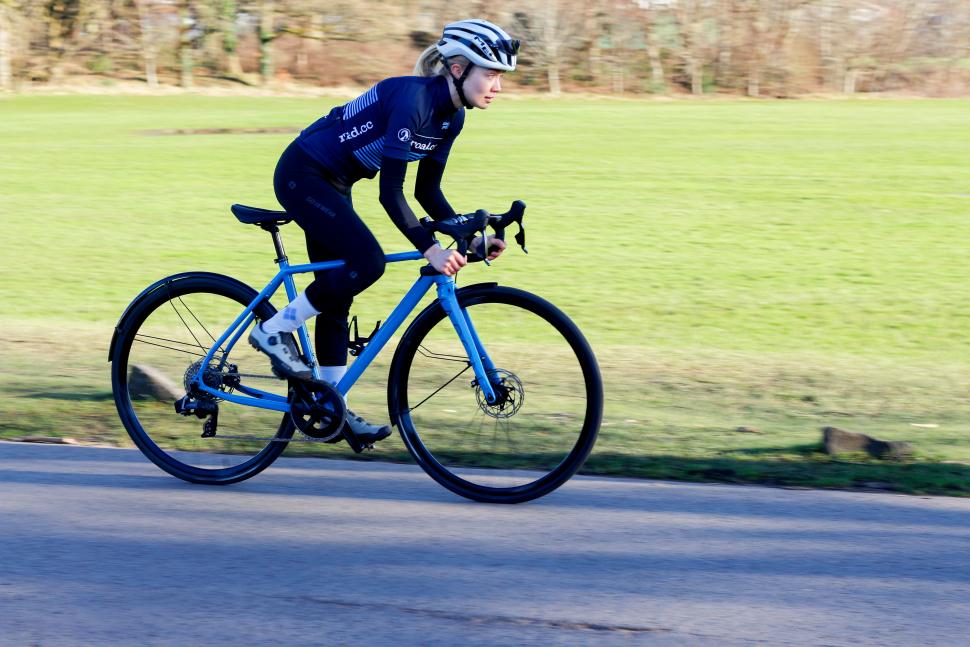
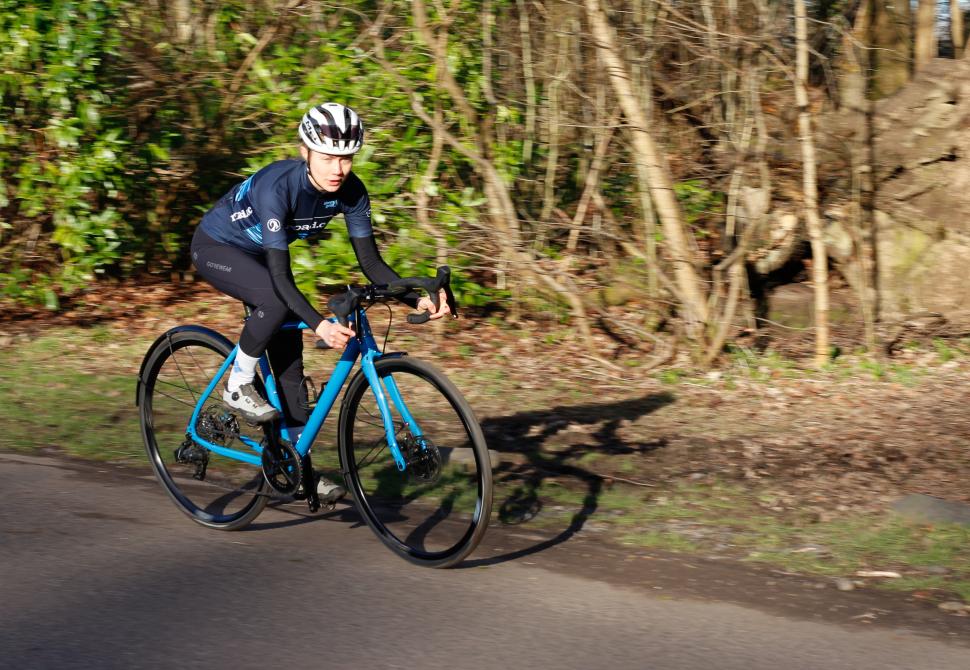

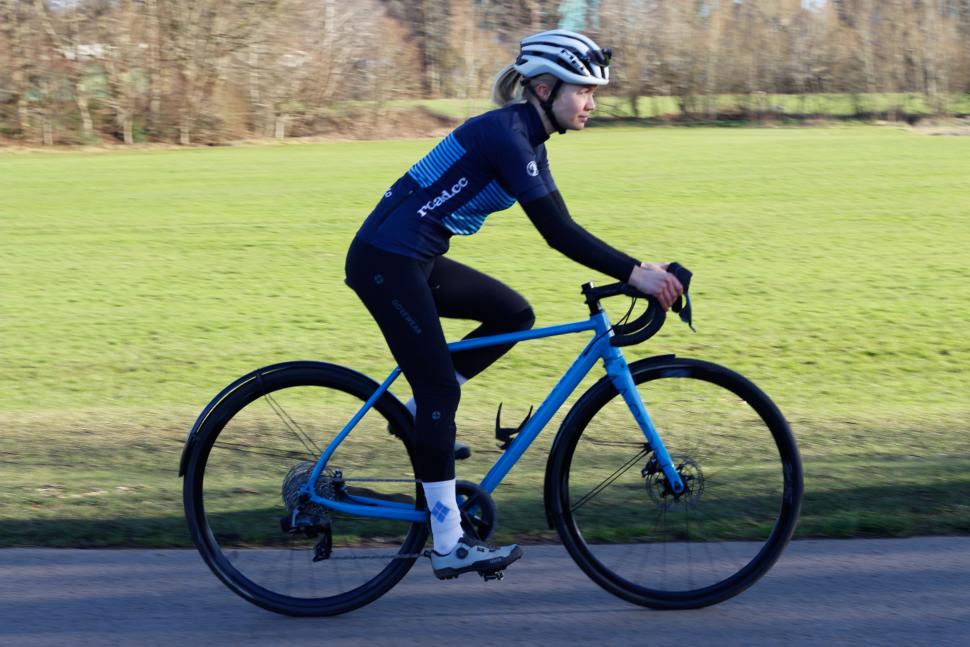



























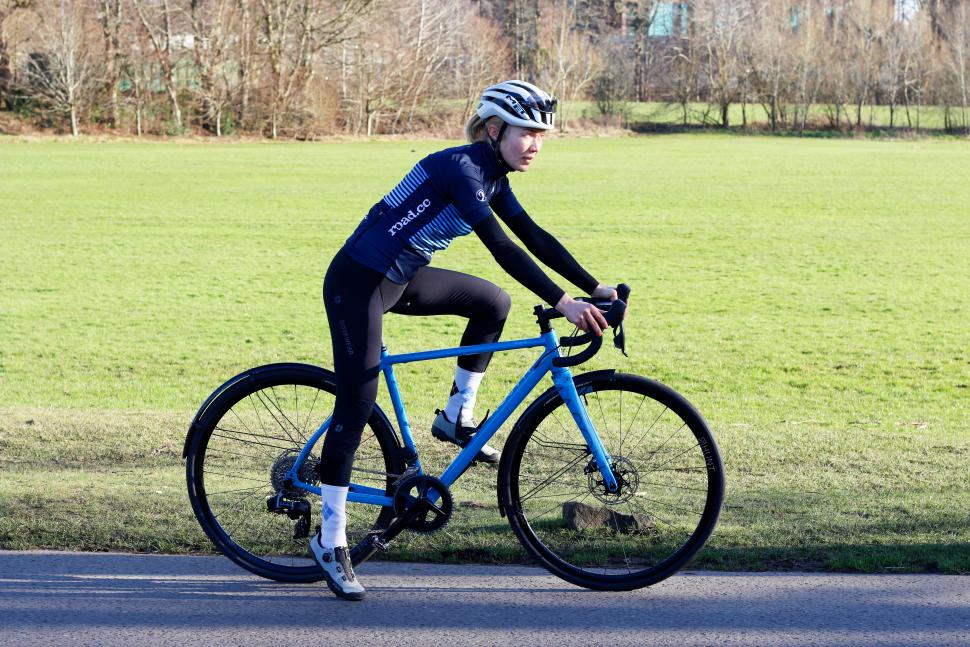
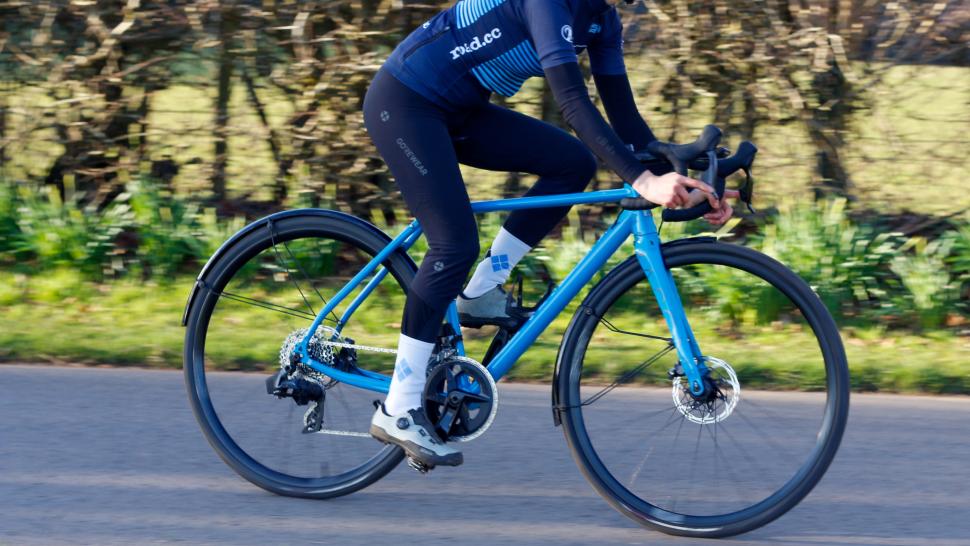


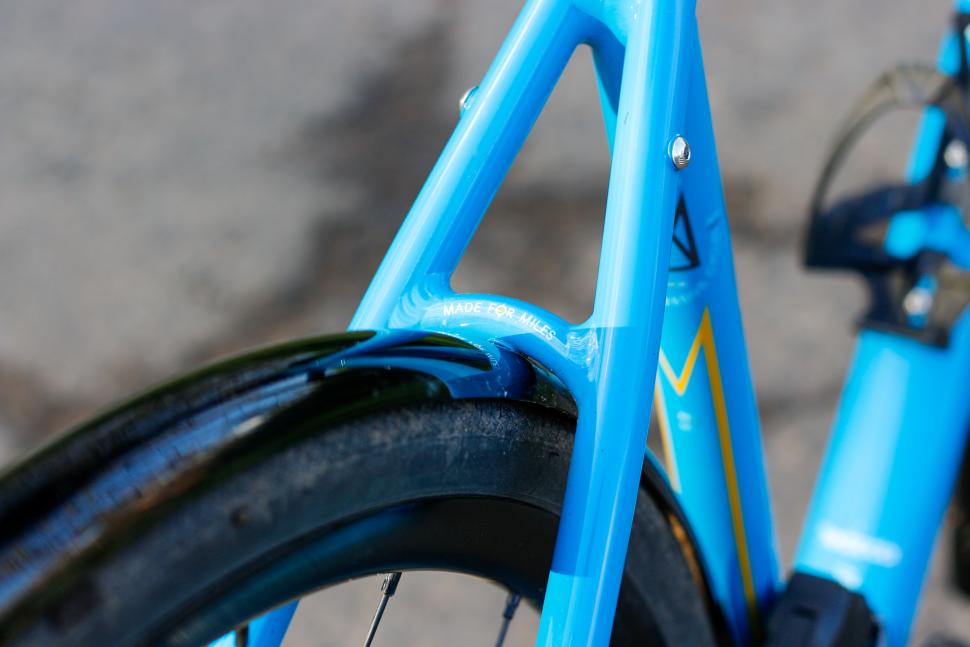

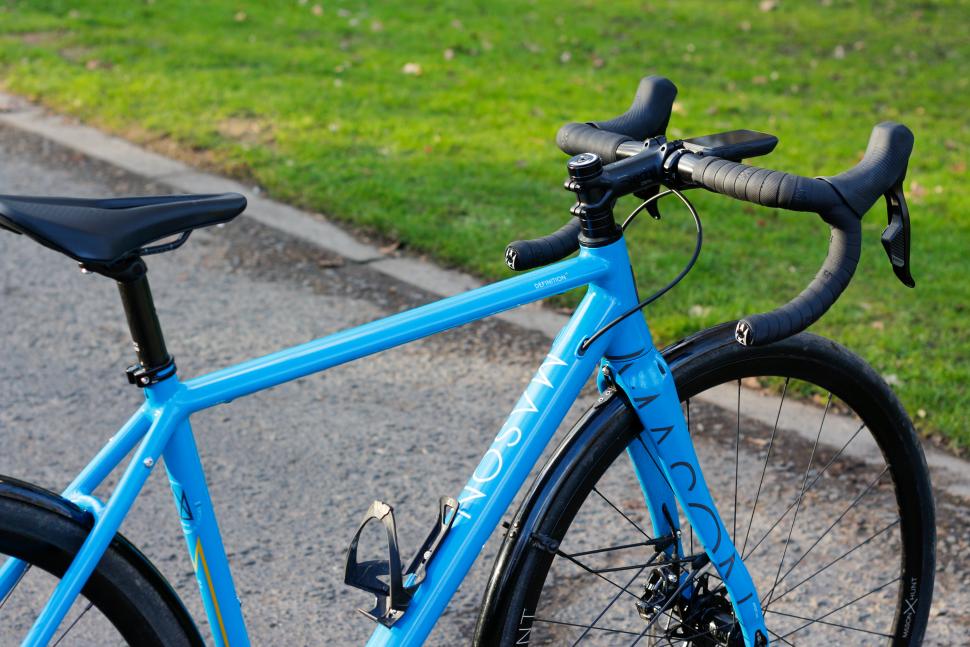
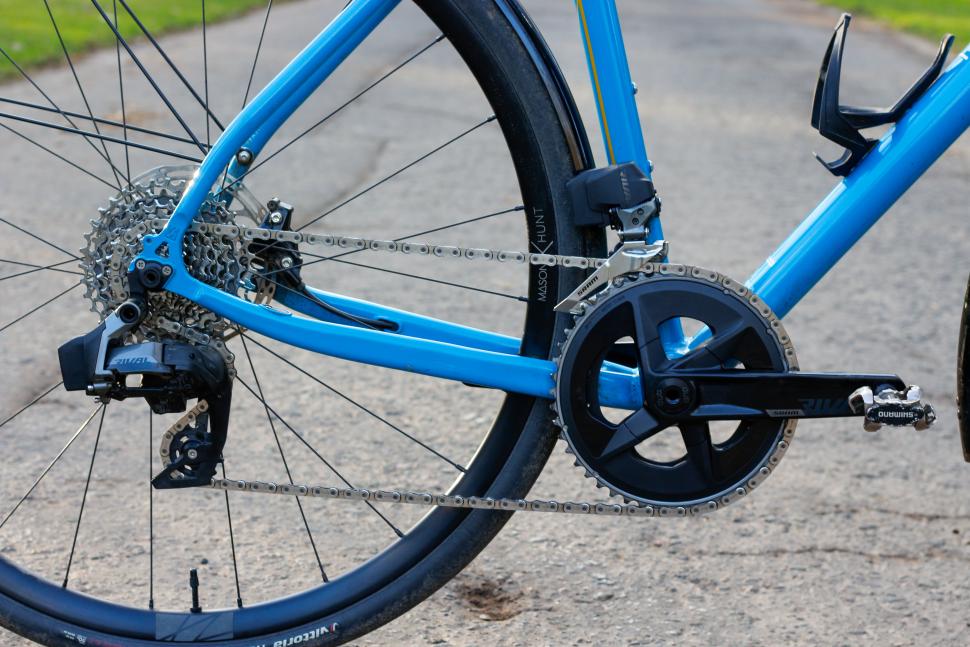
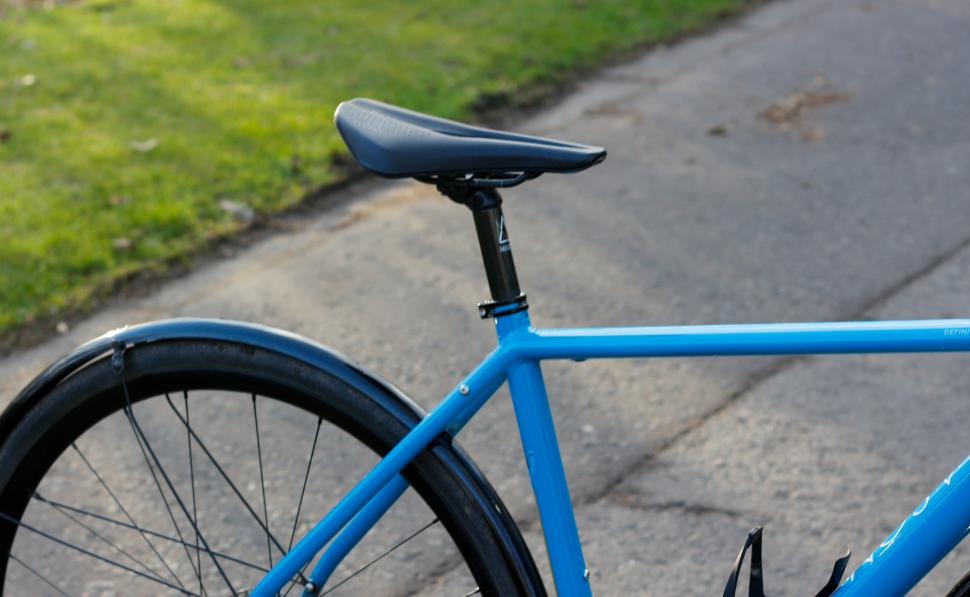
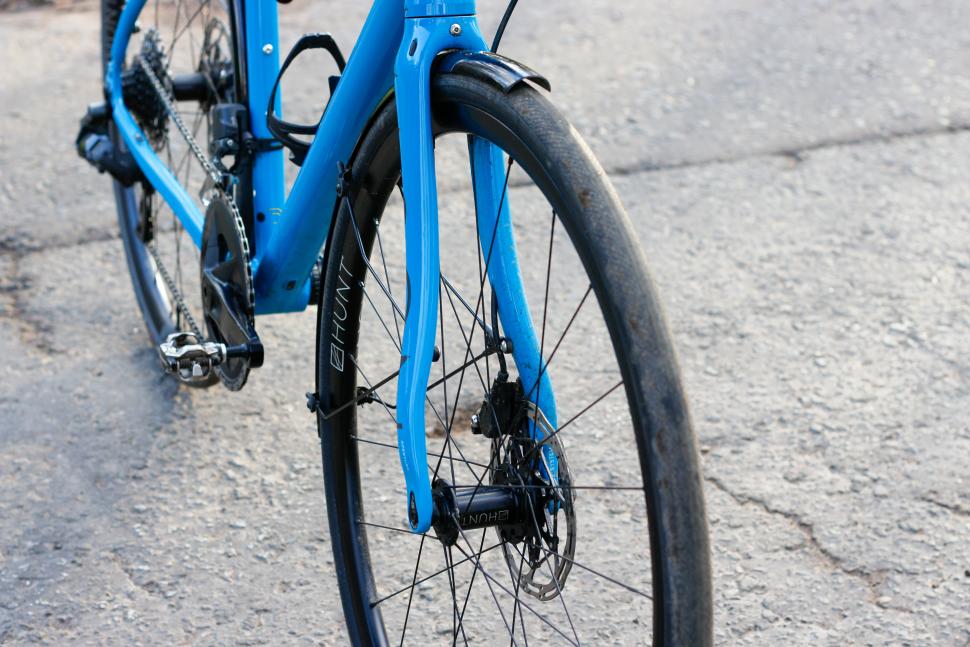
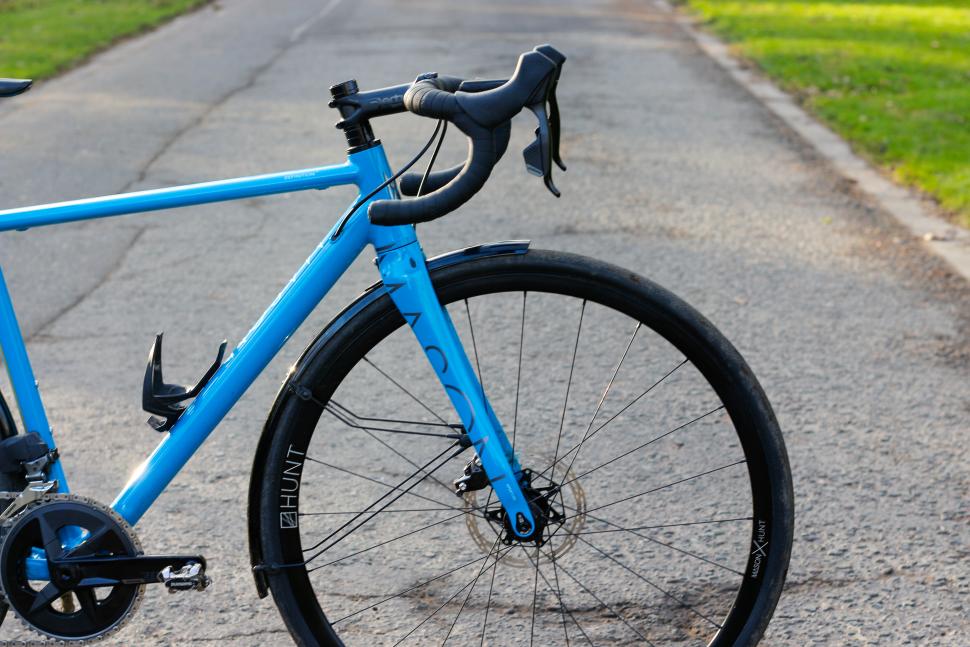

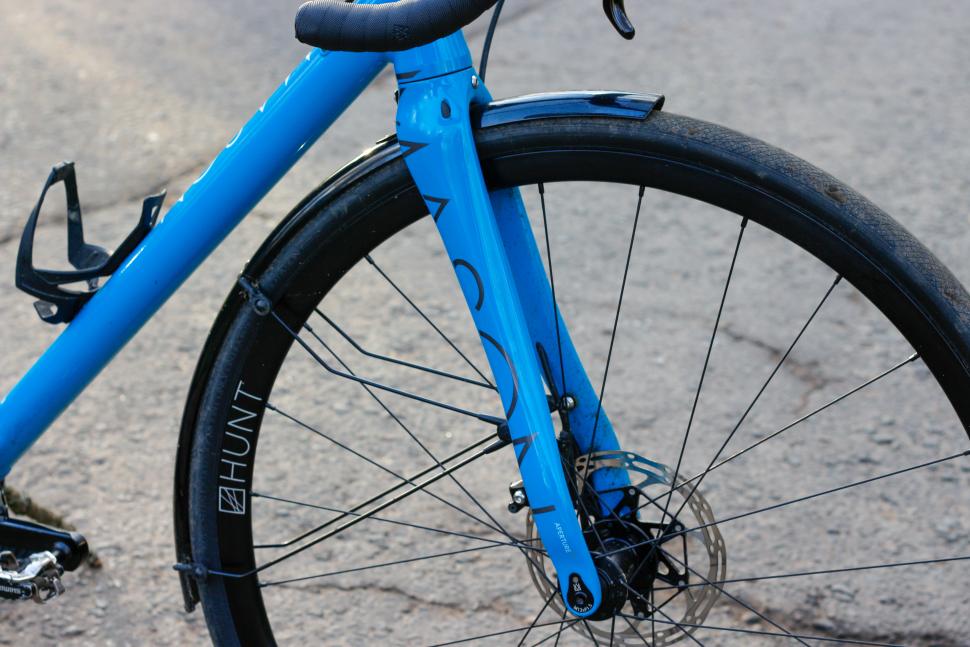


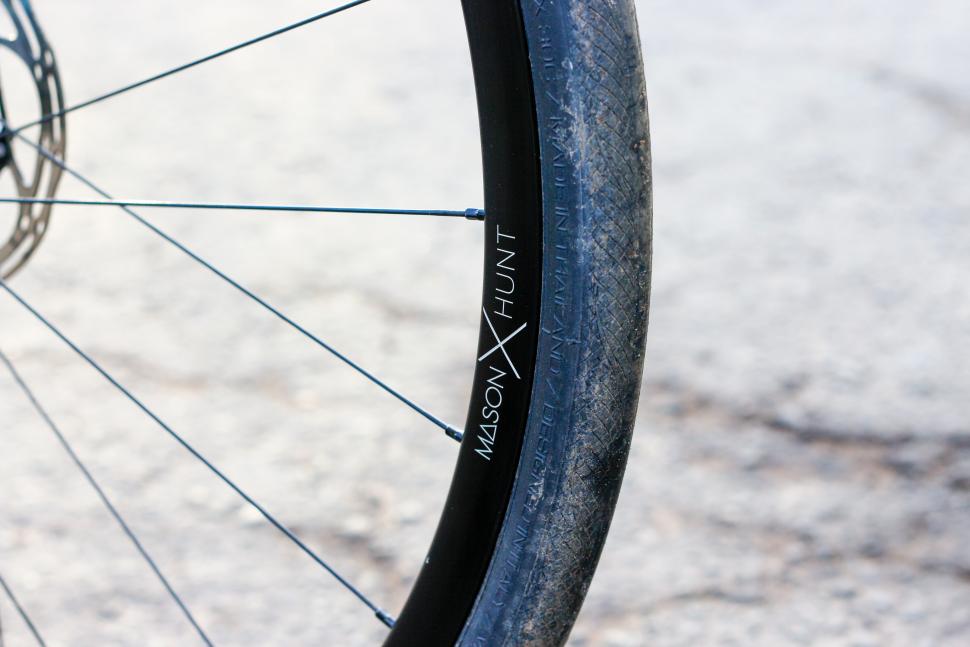

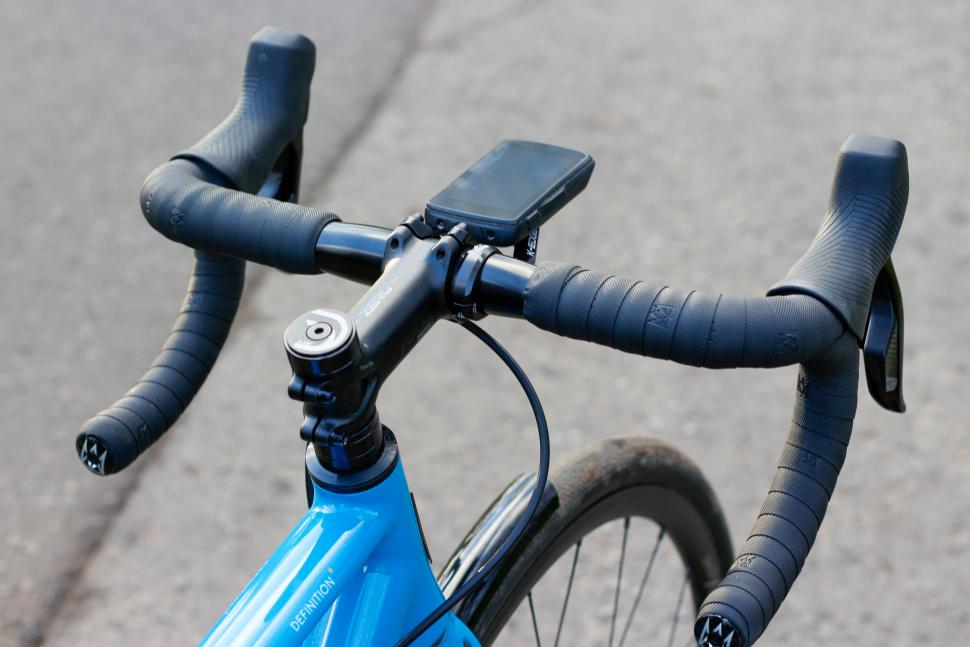
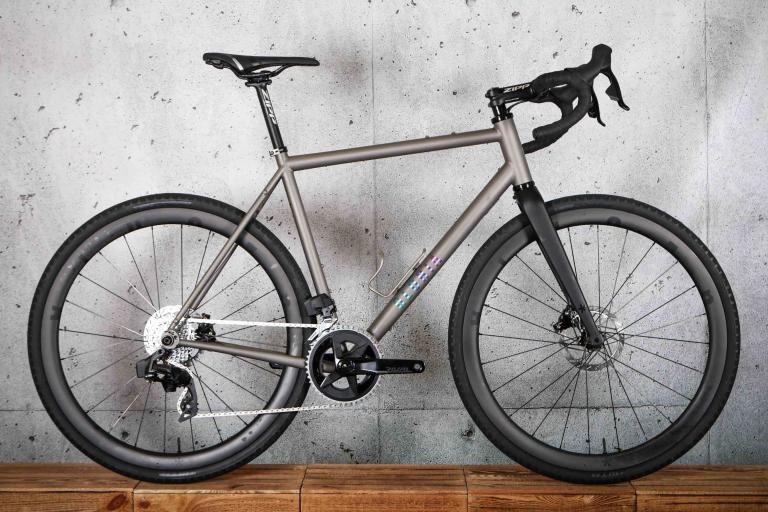


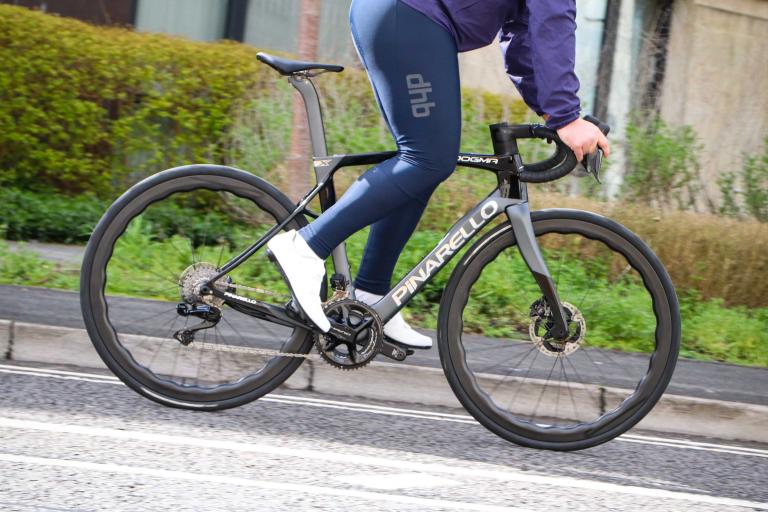
Add new comment
3 comments
No udh? No thank you
Very nice read, Personally i think the part of the bike your disliking mostly boils down to the tyers and wheels. Shove some alpinsts in there and some GP5000 clinchers with some letex tubes and romove the mudguards and think your apprasel would be vastly different on the climbs and sprinting.
I mean those vittorias are boat anchors and there rolling restance! lets just say 2.2inch conti race king has less rolling resistance than this tyer at 45psi. Fast the vittorias are not.
Really informative and thorough review. Thank you.